#Bach Orchestral Suite
Explore tagged Tumblr posts
Text
youtube
J.S. Bach - Orchestral Suite no.3 in D Major, BWV 1068 (c.1730)
I want to say I was listening to this one in my rocking chair next to my books on music. Or with wine and cheese at someone's party. No, I put this on while I washed the dishes. I thought I'd share my old post on this same piece but realized that I'd never written about this suite. And I don't have anything profound or introspective to say about it. It made taking down this mountain if dirty dishes feel like a grand accomplishment. It's a reminder that this music was written for the audience to enjoy. It doesn't have to be treated like music theory homework. That being said, I do like looking at the history of the orchestral suite, which would develop into the symphony. What can we hear from Bach's Proto-Symphony no.3? The Orchestral Suite was a carryover from France's Ouvertures. It would start with a slow section to draw in the audience, and then a lively counterpunctual exercise. After the "heavier" opening movement, the rest of the pieces are light dances, galanteries (minuets, bourrées, courantes, sarabandes, gavottes, allemandes, gigues, etc.). Because the German political elite had a taste for French art, they would have music played during their banquets and parties. Bach had no real interest in this kind of music (which would be a decent income source) because he was already dedicated to writing church music. But what few he did leave behind (we only have four Orchestral Suites attributed to him) sounds like great party music. The Suite in D Major is scored for 3 trumpets, timpani, oboes, violins, viola, basso continuo, giving it a louder sound than the others. The Ouverture starts with the slower grand statement announced by the trumpets and timpani. As you'd expect from Bach, this opens into a counterpunctual explorations of the melodies that developed out of the opening, but with the vibrancy of Vivaldi's fast paced concertos. The ending section cuts back and ends with a more subdued coda. The Air of this suite has stuck in our culture through films and TV, popular for its beautiful melodies. I remember first hearing it in the most ironic example I know; played during the library scene in Seven (or "Se7en") from the 1995 film. The ugliness and depraved misanthropy in the film is contrasted for a moment by the idealized "beautiful music" by an idealized "Great Composer". I thought it was showing the spectrum of human minds, that the "greatest" Baroque composer comes from the same human family as a lunatic serial killer using the Christian "Seven Deadly Sins" for gruesome punishments against his victims. Listening to it now I think it's fascinating that someone could have been touched or moved by the gorgeous Aria without words Bach wrote for whatever party or occasion, and she would have no idea that the same music would be heard again as so many of these festival pieces were back then. The latter dances show off the trumpets to make each one boisterous and lively. Two Gavottes with heavy emphasis on the beat, an upbeat Bourrée, and ending on the always fun and swaying Gigue. Of these dances I think I love Bach's gigues the most because they're always densely woven with his long waves of counterpoint across each instrument to create a dance that makes me think of old pub drinking songs or sailors dancing and drinking at sea. Another reminder that this music is supposed to be fun and enjoyable for anyone, and you can turn your own living room into an 18th century court for fun.
Movements:
Ouverture
Air
Gavotte I/II
Bourrée
Gigue
#Bach#J.S. Bach#Johann Sebastian Bach#Orchestra#Orchestral Suite#suite#music#classical#baroque#orchestra music#classical music#baroque music#Bach Orchestral Suite#French Ouverture#Air on the G string#Air#Bourree#Gigue#Gavotte#Youtube
20 notes
·
View notes
Text
Johann Bernard Bach (1676-1749) - Orchestral Suite No. 4 for Strings and Basso continuo in D-Major, IV. Passepied I & II. Performed by Florilegium on period instruments.
#johann bernard bach#baroque#classical music#orchestra#suite#period performance#period instruments#baroque music#rarely performed composers#orchestral suite#strings#string orchestra#bach#passepied
23 notes
·
View notes
Text
AOTD 10/19: Orchestral Suite No. 3 in D Major, BWV 1068 (Arr. Papalin for Recorder Ensemble) - Johann Sebastian Bach
did feel a little like i was in a fairy forest. recorders just have that quality
#aotd#orchestral suite no. 3 in d major bwv 1068 (arr. papalin for recorder ensemble)#johann sebastian bach
0 notes
Note
Hi I'm loving working my way through your post about music Edwin might have liked from his era! Thanks for creating such a cool resource!
In one of the gameodens, George mentioned he used a music box that played Blue Danube to get into the right headspace for Edwin in Hell.
Do you have any thoughts on that piece of music? On any associations it might have that I've missed?
In my ignorance, I'm inclined to think that the tune itself isn't particularly relevant, but more the tinny tone and repetitive motion/refrain foster an anxious kind of energy... much like being chased by a demon spider through endless corridors, for instance,
Hello hello! Thank you so much for asking this question, I literally live to talk about this stuff. For those of you who haven't seen the resource post being referred to, you can find it here!
So, I actually asked George about what music Edwin would have enjoyed before his death during his first round of cameos, and based on his answers, I don't think he knows a whole lot about classical music (which is fair enough). Because of that, I think his reasons for picking that song were likely more feeling-based than history based! So, let's talk about it.
So, The Blue Danube Waltz by Johann Strauss (otherwise known as An der schönen blauen Donau) is a waltz piece, as the name suggests. A waltz piece is a piece that is almost always written in 3/4 time (otherwise known as 'waltz time') because the waltz can only be danced to pieces in triple time (almost always 3/4, but also conceivably in 6/8, if a composer wants to be annoying). Waltzes are known for their smooth, gliding motion and perpetual forward momentum. They very much inspire movement, so I think in some way, you're right! They very much match the frantic, anxious energy of trying to escape a monster.
Also! You've stumbled upon something that I've actually talked about quite a bit with my music composition/film scoring students (I also teach orchestral composition, on occasion). In many famous villain scenes, you will often find very upbeat and/or soothing classical music set amongst violent fights/torture scenes/other various villainous acts.
The most famous would probably be A Clockwork Orange paired with Beethoven's 9th symphony or Bach's Goldberg Variations in the Silence of The Lambs, but I've also seen Bach's cello suite paired with a great many villain scenes (the one that comes to mind is Wilson Fisk from Daredevil). Classical music has a long history of being used in horror movies and as villainous themes, so I think the fact that George paired it with the doll spider is very fitting.
As for his listening to the music box version, the doll spider was in the Doll House, surrounded by broken dolls and childish laughter. I think the sound of a music box would be the best way to get into that sort of mindset for sure.
Thanks for asking!
#dead boy detectives#dbda#dbdshow#edwin payne#this is mostly off the dome lmao i hope it’s all correct#technically a waltz can be written in anything that's triple time#but 3/4 and 6/8 are just the most common#if i see a waltz in 3/8 or 9/8 then i'm legally allowed to kill someone i think
42 notes
·
View notes
Text
it's possible I made an extended playlist to give context to the classical (non-technically speaking) music in OFMD, with the pieces listed in historical/chronological order, and in the context of their full pieces (mostly - I'm not literally going to put entire operas on there, but symphonies and concertos have mostly been finished)
and it's possible that that playlist is ten hours long
and it's possible you can find it on spotify right now, and that below the cut is the full chronology
(edit: corrections welcome btw!!!! i am by no means a music historian, nor have any higher level music education, just a lifelong association and interest <3 if you know better than me, PLEASE let me know so it can be more accurate!)
N: most of the Vivaldi pieces don't really have any dates I could find, so they're just sort of scattered through the first few decades of the 18th century. and yes, technically the opening Corelli isn't in there, but I think putting another La Folia in is important for the context of s2!
1700 - Arcangelo Corelli, Violin Sonata in D Minor, Op 5 No 12 "La Follia"
1703-6 - George Frederic Handel, Keyboard Suite No 4 in D Minor, HWV 437
? - Antonio Vivaldi, Cello Concerto in G Minor, RV 416
1711 - Antonio Vivaldi, Concerto No 11 in D Minor for Two Violins and Cello RV 565
1715 - Georg Philipp Telemann, Sonata for Violin and Basso Continuo in G Major TWV 41:G1
1718-20 - Antonio Vivaldi, The Four Seasons, Violin Concerto in G Minor Op 8
Early/mid C18 - Domenico Scarlatti, Keyboard Sonata in F Major, K 107
? - Antonio Vivaldi, Oboe Concerto in C, RV 452
1720s? - Antonio Vivaldi, Concerto for Two Cellos in G Minor, RV 531
1727 - Johann Sebastian Bach, Ich steh mit einem Fuß im Grabe, BWV 156
1725-35 - Georg Philipp Telemann, Concerto for Recorder and Viola da Gamba in A Minor TWV 52:a1
? - Antonio Vivaldi, Concerto in G Minor, RV 576
1730 - Johann Sebastian Bach, Orchestral Suite No 3 in D Major, BWV 1068
? - Antonio Vivaldi, Piccolo Concerto in A Minor, RV 445
? - Antonio Vivaldi, Trio Sonata in D Minor, RV 63, 'La Follia'
1738 - Johann Sebastian Bach, Harpsichord Concerto No 4 in A Major, BWV 1055
1738-9 - Johann Sebastian Bach, Concerto for Harpsichord, Strings, and Continuo No. 5 in F Minor, BWV 1056
Early/mid C18 - Domenico Scarlatti, Keyboard Sonata in E Major, K 380
1741 - Johann Sebastian Bach, Goldberg Variations, BWV 988
1747 - Johann Sebastian Bach, Musical Offering, BWV 1079
1747-8 - George Frederic Handel, Concerto in F Major, No 16, HWV 305a
1773 - Mozart, Symphony No 25 in G Minor, K 183
1782 - Mozart, String Quartet No 14 in G Major, K 387
1795 - Beethoven, Piano Sonata No 2 in A Major, Op 2 No 2
1792 - Beethoven, Piano Sonata No 3 in C Major, Op 2 No 3
1780 - Mozart, Symphony No 34 in C Major, K 338
1786 - Mozart, Le nozze di Figaro (excerpts)
1810? - Beethoven, Bagatelle in A Minor, WoO 59: Für Elise
1811-12 - Beethoven, Symphony No 7 in A Major, Op 92
1826 - Franz Schubert, Ständchen (Serenade) "Horch, horch, die Lerch!" D 889
1827 - Franz Schubert, 4 Impromptus, Op 90, D 899
1833-4 - Felix Mendelssohn, Lieder Ohne Worte, Book 2, Op 30
1835 - Frédéric Chopin, 12 Études, Op 25 (excerpts)
1838 - Robert Schumann, Kinderszenen, Op 15 (excerpts)
1838 - Franz Liszt, arr., 12 Lieder von Franz Schubert, S 558, No 9
1842 - Frédéric Chopin, Waltz No 12 in F Minor, Op 70, No 2
1871 - August Wilhelmj, arr., Air on a G String
1874 - Giuseppi Verdi, Messa da Requiem (excerpts)
1878 - Antonín Dvořák, String Sextet in A Major Op 48
1888-91 - Claude Debussy, Two Arabesques, L 66
1890 - Claude Debussy, Rêverie, L 68
1888, 89, 90 - Erik Satie, Trois Gymnopédies, Gnossienne No 5, Trois Gnossiennes
#OFMD soundtrack project#Our Flag Means Death#OFMD#OFMD music#Our Flag Means Death music#OFMD soundtrack#Our Flag Means Death soundtrack#music
56 notes
·
View notes
Text
Two (relatively) recent and worthwhile considerations of FromSoftware soundtracks
As I mentioned a few months ago, I supplemented and republished an older essay on the music of Demon's Souls, the Dark Souls series, and Elden Ring, which you can read here. And I figure it's worth bringing up again, since I'm recommending two videos on the same general subject for a mini-post here.
To begin: Loopine, one of whose videos I've linked before, came out with a video, entitled "How Elden Ring Surpassed the Dark Souls OST", arguing that Elden Ring's clearer and deeper sound design puts it above Dark Souls 3's score. I find Loopine's analysis according to production unusual, appreciable, and clearly articulated; and, contrary to most media criticism solely being the self expelling thoughts, Loopine also conducts a small-scale experiment with other people regarding musical recognition — an experiment that, were it to be applied on a large scale, could yield very interesting results. Even so, the final thought I continue to have here is that the scores to Elden Ring and Dark Souls 3 are so comparable in their aggressive roteness (or rote aggressiveness?) that sound design can't possibly make that large of a difference.
Let me kinda diverge for a moment to remark on the trend Loopine mentions of "REAL CLASSICAL GAME COMPOSER CONDUCTOR REACTS TO DARK SOULS/ELDEN RING MUSIC" videos, just to say: first, how weird that videogame culture at large continues to suffer from this sort of media envy, awaiting the representatives of "real" art-forms to recognize an Undertale theme, or whatever. There seems to be the presumption that a certain kind of professional occupation necessarily yields novel insights; and that such professional appreciation somehow enforces an objective qualitative status upon the art. Did Bach admire the work of Vivaldi? Sure. Does that mean that I have to "admit" that Vivaldi's music is great? Uh... no. But, more than that, I find these videos confusing, given their emphasis on the quality of effectiveness — because a large part of my critical argument is that most tracks for the Dark Souls sequels and Elden Ring are highly ineffective.
A possible reason for this stark divergence of opinion is that, perhaps, most of the people featured on these videos haven't spent much time with the games, and so they miss the more particular details; and they also do not examine the soundtracks as a whole, both internally and according to FromSoftware's relevant catalogue, and lose sight of a bigger picture which reveals the tracks' interchangeable identities. On its own, Yuka Kitamura's theme for Lady Maria might seem extraordinary, and specially suited to that confrontation; when played right after the two-dozen others like it from Dark Souls 3 and Elden Ring... well.
From here, then, I'm going to recommend Crunchy's comparison of the original Demon's Souls soundtrack to the remake's. Being almost 3.5 hours long, and having no script prepared, it is, in a sense, the opposite to Loopine's. The length is not necessarily to the comparison's benefit. I think the video's maker would admit that, eventually, it becomes difficult to sustain the fresh particularities of criticisms made earlier on, because the offenses are fairly consistent. Since I left a comment on the video, I'm going to just quote that comment here:
This is a good musical analysis. Most of the comparative critiques I've come across couch the difference in terms of "taste", meaning that they tend to miss the contextual dimension. I think that it can be argued that the remake's music even fails on its own terms: the elaborateness of the reimaginings suggests that you're battling highly complex bosses with multiple phases, and that's not the case at all. With some of these tracks, I feel like half of the respective boss fight might have gone by during the intro. Given the general orchestral approach, I have the impression that the composer was probably drawing on Bloodborne's OST as the standard, since that was the last FromSoftware title prior to the remake which utilized an actual orchestra for pretty much its entire score; but, of course, Bloodborne's OST is communicating something very different from the world of Demon's Souls. Shrieking, slamming, grotesquely dark horror is definitively out of line, just as the needless graphical elaborations turn a brutal and austere world into a series of decked-out theme parks. I continue to be confused by most of FromSoftware's musical decisions for these games. For instance: why hire Motoi Sakuraba as your composer for Dark Souls? Nothing about Sakuraba's résumé recommends him as a composer of any sort of orchestral music. Was he just an affordable, "reliable" option? [Crunchy provided his own response to this: "I think Sakuraba was hired mainly because he had a relationship with Bandai, who published DS1."] How so much of a game like Elden Ring can be particularly crafted, while 85% of the music is a bundle of atmospheric non-events and "epic" slop, is baffling. Miyazaki's role here seems strangely incompetent, and out of line with the image of the man who pushes these teams to exceed aesthetically generic impulses.
(Parenthetically, I'd call readers' attention to Crunchy's videos on Elden Ring. I've explored just a few, but each stands among the most interesting and informed analyses of the game's esoterica I've come across so far) — OK. That's all for now. Bye!
#fromsoftware#soulsborne#elden ring#videogame music#shunsuke kida#yuka kitamura#motoi sakuraba#dark souls#demon's souls#game soundtrack#music analysis#musical analysis
19 notes
·
View notes
Photo
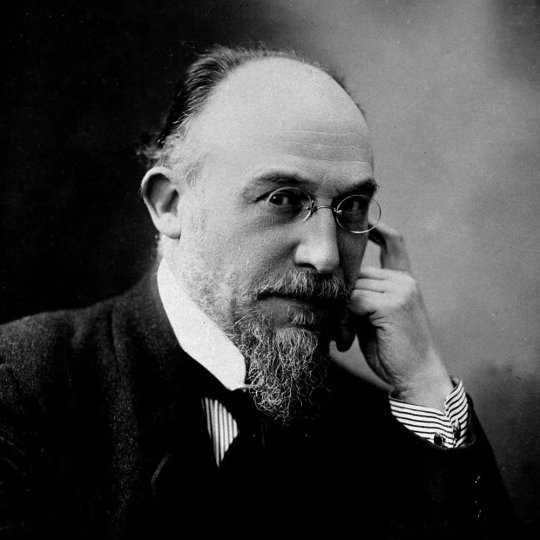
I am by far your superior, but my notorious modesty prevents me from saying so.
- Erik Satie
To his contemporaries and peers Erik Satie was something of an enigma. Just a few of his quirks included claiming he only ate white foods, carrying a hammer wherever he went, founding his own religion, eating 150 oysters in one sitting, and writing a piece with the instruction to repeat 840 times! As a composer, Satie paved the way for the avant-garde in music and became a very influential figure in the classical music of the 20th century whose works still sound fresh today.
Born into a poor and difficult childhood in the Normandy harbour town of Honfleur on 17 May 1866, Satie would always be an outsider. The Paris Conservatoire to which he was enrolled by his stepmother, herself a pianist, became for him “a sort of local penitentiary” during his teens; he left with no qualifications and a reputation for being lazy. He signed up for military service in 1886 and dropped out within the same year. Immersing himself in the bohemian life of Montmartre, he became linked with the popular music scene and eked out a living as an accompanist, playing at the Chat Noir cabaret. Always on the periphery, and forever out of money, he later downgraded from the cramped room in which he lived to the less fashionable Parisian suburb of Arcueil, where he holed up in isolation and squalor – no visitors set foot in the room during the near-30 years he lived there.
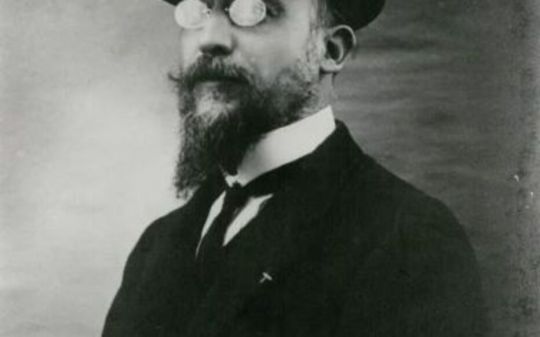
Much has been made of the eccentricities of this flâneur, who was always seen in a grey velvet suit, and yet underlying Satie’s music is his serious desire to create something new. You can hear it in his popular piano pieces: the haunting scales and rhythms of the Trois Gnossiennes written under the spell of Romanian folk music, and the meditative world of Gymnopédies, where, as in a cubist painting, motifs are “seen” from all sides. At a time when French composers were looking to escape the shadows of Wagner’s epic Romanticism, the French composer’s stripped-back mechanical sound, inspired by the humble barrel organ, offered a radically simple approach.
Satie preferred originality to the mundane. The composer of the famous Gymnopedies, could never be accused of having an uninteresting personality. For one, his outgoing fashion statements always caused a stir. During his Montmartre years, he had 12 identical velvet corduroy suits hanging in his wardrobe, which earned him the nickname ‘The Velvet Gentleman’, and in his socialist years, he donned a bowler hat and carried an umbrella.
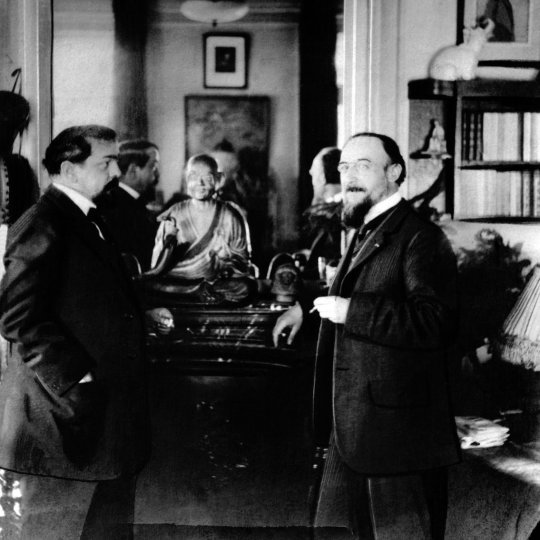
Debussy helped to draw public attention to Satie, orchestrating two of his Gymnopédies, yet Satie had to wait until much later in life to attain celebrity status. While still earning a living writing salon dances and popular cabaret songs, and after suffering a creative crisis, he enrolled himself at the Schola Cantorum in Paris at the age of 39. Rather than finding him validation, his studies seem to have fuelled his hatred of convention - it’s with more than a hint of bitterness that he claims to put “everything I know about Boredom” into the Bach chorale of his masterful Sports et Divertissements piano pieces. But notoriety led to a succès de scandale and when it came it came with a bang in Parade, his surreal, one-act circus ballet for Diaghilev. Into the orchestral score, which featured jazz and cabaret tunes, were thrown typewriters, sirens and a pistol - just the kind of noises a wartime audience would normally pay not to hear. With its rigid cubist costumes by Picasso - which restricted Massine’s choreography - and a promotional push from Cocteau, it was provocative enough to secure Satie’s position at the vanguard of modernism.
Yet Satie was continually frustrated in his attempts to be accepted as an artist in high society France - his failure to establish himself at the prestigious Académie des Beaux-Arts, to which Debussy had won a scholarship, only compounded his resentment. Was this treatment by the cultural elite fair? Certainly his determination to antagonise his audience in his late ballets did little to endear him to the critics, but the fierce criticism he received in Paris was also a sign of things to come. Pierre Boulez would later poke fun at Satie’s lack of craft, while composer Jean Barraqué - another proponent of 12-tone music - would deride Satie as “an accomplished musical illiterate … who found that his friendship with Debussy was an unhoped-for opportunity to loiter in the corridors of history”.
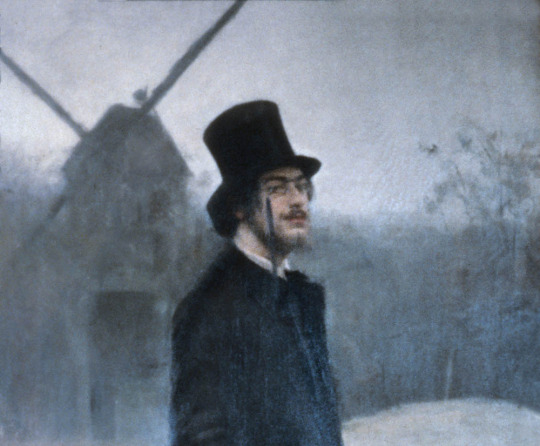
Satie is perhaps, to this day, the most audacious and original composer when it comes to naming his works e.g. Gnossiennes and Gymnopédies. With Satie you will not see symphonies, concertos or opus numbers. Satie possessed a wicked sense of humour and his mockery, both of himself and others, became an inspiration for many of his irony-tinged works. His Sonatine bureaucratique is a spoof of Muzio Clementi’s Sonatina Op. 36 and contained many witticisms in the score. For example, he writes Vivache (vache being French for cow) instead of the original Italian tempo marking Vivace.
Whether in the collage-like miniature piano parodies he wrote during the World War I, his creation of a theatre format that has endured over the years, or in his collaboration with Jean Cocteau, Pablo Picasso y Sergei Diaghilev, there is a liveliness of imagination and a hunger for innovation that made Erik Satie In the torch bearer of the vanguard in his work. Satie would influence so many so strongly that years later some of his closest friends became radical artists, for example. ManRay, the sculptor Constantin Brâncusi, and Marcel Duchamp, or a much younger group of Paris-based composers like Les Six.
Satie, a known drinker of absinthe, and apparently every other alcohol available, died of cirrhosis at the age of 59 in Arcueil, France in July 1925. But his compositions, especially those deceptively simple-sounding solo piano works, find life today through recitals, concerts, and great movie scores. Although he died in poverty with little success to his name, today Erik Satie is acknowledged as a founder of 20th-century modernism, who changed the face of music.
Personally I do find Satie's music enriching, But I also find that his calculated wackiness is culturally apt. Pieces like ‘3 Pieces in the Shape of a Pear’, ‘Flabby Preludes for a Dog’ and ‘Desiccated Embryos’ rewardingly deflate Wagnerism's excesses in a characteristically French way.
#satie#erik satie#quote#music#classical music#composer#pianist#debussy#modernism#paris#french#france#arts#culture#french culture#innovation#artist#life
181 notes
·
View notes
Note
Morning/Afternoon! If you have the time, do you have any recommendations for getting into classical music? Thank you
Taste for music, like any faculty, is a trait that can be trained and refined. Classical music is an enormous catalog with dozens and dozens of styles, more than any one person can reasonably experience in a single lifetime. Most people gravitate towards particular styles or composers that they like best, so the initial challenge for a lot of people new to classical music is finding a good entry point.
My personal recommendation is banal and predictable, but I think it's the most effective: start as far back as you're willing to go, and work your way forward to the present. In the process, you'll experience both the history of western music and its development over time. As you go, you'll find you enjoy some composers more than others. I happen to have a particular fondness for Bach, Schubert, and (of course) Wagner, but you might find a stronger affinity with Mozart, Tchaikovsky, or Saint-Saëns.
While it would be impossible for me to give a full listening guide to all of what I consider the essentials for art music in a single tumblr post, I can at least point to the Big Names as a starting point. I'll try to include videos that match quality recordings with sheet music, because I firmly believe that following along with a score mentally crystalizes a work's form, even if you can't read music yourself. A fun video I also recommend is this journey through the melodies of history's best composers, a highly abridged music appreciation course in just a few hours (timestamps in the video for convenience):
youtube
The Early Stuff
I tend to skip past chant and Renaissance music, despite their importance, because they're especially challenging to the modern ear. Early composers like Palestrina and Monteverdi mark a transition from the modal styles of ancient music to the more traditional tonalities of the music we know today. Monteverdi is also the first to compose what we would properly call "opera" today, though I won't link any but the most important operas in this post because they're all 3+ hours in length.
youtube
Essential listening:
Allegri: Miserere
Monteverdi: Vespers della Beata Vergine
The Baroque
Here's where the good stuff really starts. The baroque period was an artistic response to the Reformation and its aesthetic priorities. Baroque music, like art, tends to be highly ornamented, harmonically complex, and texturally dense. Counterpoint is a big feature of baroque music, and in Bach especially. Almost all baroque composers have merit, but if you were to pick only one to listen to, nobody could fault you for choosing Bach. I'm including some of my favorites of Vivaldi and Handel here as well. Bach never touched opera, which is a shame, though he got close with his St Matthew and St John Passions.
youtube
youtube
Essential listening:
Bach: St Matthew Passion, BWV 244
Bach: Fantasia and Fugue in g minor, BWV 542
Bach: Orchestral Suite No.2 in b minor, BWV 1067
Vivaldi: The Four Seasons (popular for a reason!)
Vivaldi: Gloria, RV 589
Handel: Concerto Grosso in B-flat Major, HWV 313
The Classical
Like the baroque, the Classical period of art was a reaction, this time against the opulence and excess of baroque art (actually there were smaller, more molecular movements in-between baroque and classical, like the galante, but for brevity we'll skip those). The Classical period is stylized by elegance, simplicity, and symmetry. Think of the columns of Greco-roman architecture or the streamlining of Enlightenment thought. Big names of this period include Haydn, Gluck, and Mozart. We see here a shift away from the complexity of baroque to clear and distinct melody and harmony.
The Classical period also brings us the symphony in its nascent form through Haydn, who composed over 100 of them. The symphony is especially important because, along with the opera, it will become the world-building form of the musical landscape. Mozart, possibly the greatest melodist who ever lived, further perfected both the symphonic form and the opera. His tragically early death means we will never appreciate the true apex of his powers.
youtube
Essential listening:
Mozart: Symphony No.40 in g minor, K 550
Mozart: Piano Concerto No.20 in d minor, K 466
Mozart: Clarinet Concerto in A Major, K 622
Haydn: Symphony No.94 in G Major, HoB I:94
Haydn: String Quartet in E-flat Major, Op.33 No.2
Salieri: 26 Variations on 'La Folia'
The Romantic
Another movement of reaction, this time against the strictures of form and propriety of the Classical. Here we shift from elegance to raw emotional power, the composer transforming from a functionary of the elite to independent artist. None exemplified this shift more clearly than Beethoven, whose symphonies to this day reign as the greatest ever produced by a human being. Beethoven infused his music with the currents of his soul in a way no composer had, and after him, music changed forever.
The Romantic period saw a flourishing of music as an art to such a degree that abridging it here for a tumblr post is unironically difficult. Brahms, Bruckner, Beethoven, Schubert, Schumann, Lizst, Wagner, Verdi, and on and on and on. The extreme variety of composers and the sheer emotional impact of their output make the Romantic period a particular favorite for many music appreciators, myself included.
youtube
Essential listening:
Beethoven: Symphony No.5 in c minor, Op.67 (MANDATORY)
Beethoven: Piano Concerto No.3 in c minor, Op.37
Brahms: Symphony No.4 in e minor, Op.98
Brahms: Violin Concerto in D Major, Op.77
Berlioz: Symphonie Fantastique
Schubert: "Gretchen am Spinnrade," Op.2 D 118
Liszt: "Liebesträume," S 541 No.3
Tchaikovsky: Swan Lake Suite, Op.20a
Saint-Saëns: Symphony No.3 "Organ," Op.78
The Post-Romantic
As we move past the 19th Century, we see an absence of what we would call artistic "movements," so admittedly the designations of composers within this time period begins to feel arbitrary. Instead, in the wake of the revolutionary movements of the 1800s, we see a development of national schools of style. The French, the Germans, the Scandinavians, the Russians, the Italians, and even the Americans each cemented themselves into distinct artistic camps based on national histories and aesthetic preferences. These schools would pave the way for the modern music of the 20th century.
youtube
Essential listening:
Dvorak: Symphony No.9 "New World," Op.95
Debussy: Prélude à l'après-midi d'un faune
Mussorgsky: Night on Bald Mountain
Rimsky-Korsakov: Scheherazade, Op.35
Elgar: The Enigma Variations, Op.36
Prokofiev: Scythian Suite, Op.20
Modernity
With the 20th Century came the World Wars and the collapse of the West's meta-narratives about the world. Music was no longer directed as an aesthetic process in the interests of artistic narratives, and instead became an exercise of modular, individual expression. Here is where music becomes the most difficult, because tonality is no longer a central priority. That said, you'll likely still find some composers that resonate. The torturous dissonances of Shostakovich are always popular with young men, while the Catholic mysticism of Messiaen is challenging from the exact opposite direction. Vaughan-Williams and Britten carry on the tonal tradition while Schönberg and Stravinsky went in wildly atonal spaces.
youtube
youtube
Essential Listening:
Shostakovich: Symphony No.4 in c minor, Op.43
Poulenc: Sonata for Flute and Piano, FP 164
Stravinsky: The Rite of Spring
Vaughan-Williams: Fantasia on a Theme by Thomas Tallis
Messiaen: Chronochromie
Britten: Young Person's Guide to the Orchestra
Sorry this took me so long, I could have gone on like this for another 20 paragraphs, but it turns out there's a limit to how many videos tumblr lets you embed in a single post. This is just a list of recommendations to get you started, don't be intimidated by its size. Every composer is unique, and they each bring a personal language to their art that you'll gradually become more acquainted with the more you listen. If you want any recommendations on particular composers that strike your fancy, don't be afraid to ask.
7 notes
·
View notes
Text
youtube
Music I like - from my vinyl collection -
Great Czech classical music - Leoš Janáček - Sinfonietta - (Jiří Bělohlávek conducts the Czech Philharmonic)
The Sinfonietta is an orchestral composition by Leoš Janáček, which was first performed to the Prague audience on 26 June 1926 under the baton of Václav Talich at the same time as the Glagolitic Mass.
Leoš Janáček (3 July1854– 12 August1928) was a Czech composer of classical music. Although he belonged to the generation of Czech modern music, his style was characterized by considerable individuality and originality. His unusual melody, based on the folk music of Moravian regions, especially Slovácko and Lachia, became appreciated. He has made a name for himself worldwide with operas, including the most frequently performed Jenůfa, performed as Jenůfa. His orchestral-vocal works Glagolitic Mass, Sinfonietta, Rhapsody Taras Bulba and chamber works, especially string quartets, have also received world acclaim.





youtube
The first movement of the Sinfonietta was re-written by the progressive rock band Emerson, Lake & Palmer into the song Knife-Edge and recorded for their debut album.
Emerson, Lake & Palmer (abbreviated ELP) was an English rock supergroup. She was very popular in the 1970s, selling 40 million albums. The band consisted of Keith Emerson (keyboards), Greg Lake (vocals, bass, guitars, harmonica, whistles, producer[2]), and Carl Palmer (drums, percussion). Founded in 1970, this rock trio played an important role in the formation of progressive or symphonic rock.
In addition to their own compositions, such as the Tarkus suite, they also arranged classical originals by Bartók, Janáček, Bach, Ginastera, Copland, Gulda, Sullivan, Orff and Tchaikovsky.
In 2010, the band was reunited and played a gig at the High Voltage Festival in London. A recording of the concert was later released on the album High Voltage.
Source: Czech Wikipedia
12 notes
·
View notes
Text
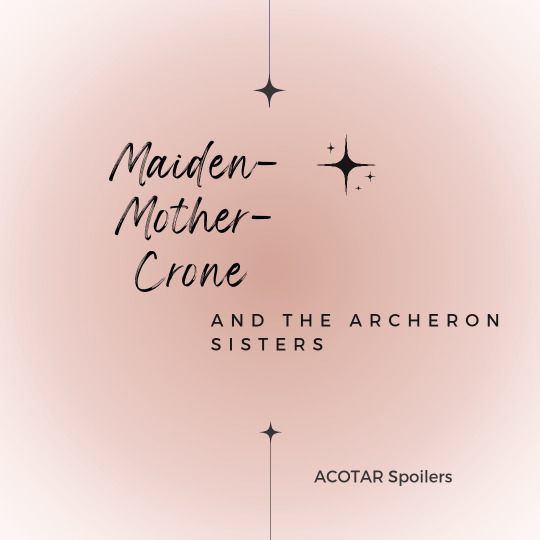
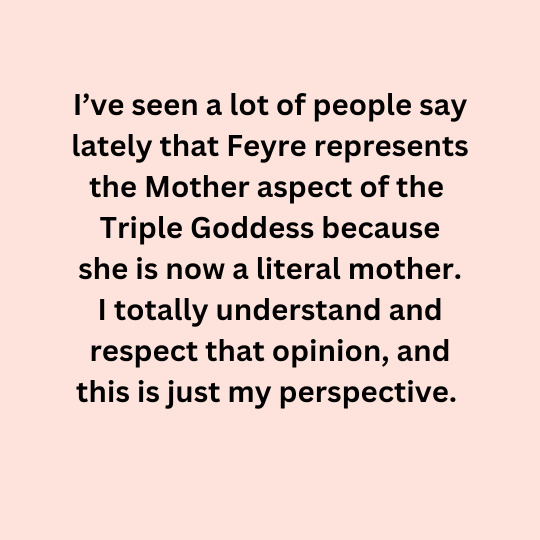


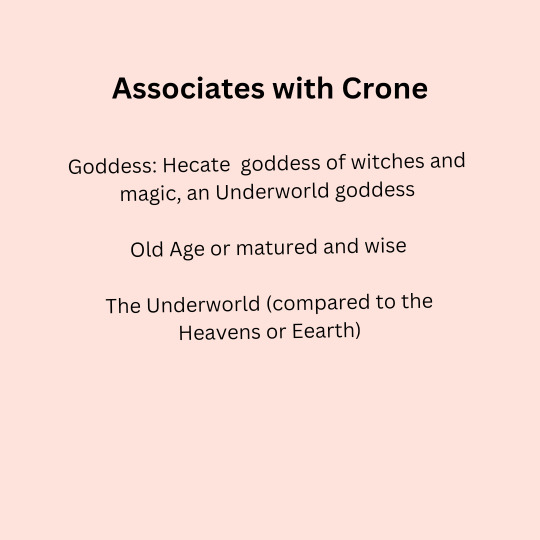


#nesta#nesta archeron#acosf#cassian and nesta#nessian#nesta x cassian#acotar#feyre archeron#rhysand#cassian#elain acotar#elain archeron#archeron sisters#Spotify
27 notes
·
View notes
Text
Good evening, as the New Year has dawned and nearly a week has past. Let us all take in a breath of fresh air that comes with the coming of the new year...this is, Air from Orchestral Suite No. 3 by Johann Sebastian Bach
Classical pieces don’t exactly have lyrics, so I thought I’d post some pieces and make a poll to help this super niche set of people maybe find the music they have been looking for one day. Even scores heard by everyone cannot be said to be known by everyone because when they go seeking it, they do not have lyrics only sound to work with. Making such masterpieces hard to find even though they are heard everywhere.
Part of Bach's Orchestral Suit No. 3 divided into the Overture, Air, Gavotee, Bourree, and Gigue. Air has been famed for many a century performed more prolifically by Yo-Yo Ma. Invoking the sense of fresh air flowing through open windows. As one can imagine the gentle breeze of Spring flowing through white curtains as they listen.
6 notes
·
View notes
Text

the boston crusaders have announced their show for 2024, glitch!
music featured under the cut:
Shaker Loops: Jon Anderson/John Adams
G-Spot Tornado: Frank Zappa
Orchestral Suite No.2: J.S. Bach
Take-Five: Dave Brubeck
True Colors: Tom Kelly, Billy Steinberg/ Saunder Choi
State of Independence: Jon Anderson
Worm Hole: Ryan George, Colin McNutt, Iain Moyer, Mike Zellers
10 notes
·
View notes
Text

Sunday, 11-24-24, 7pm Pacific
'Evenin' all, Mr. Baggins here with your Sunday Serenade, some music to soothe your achin' nerves and help ease us all into a good night, as we head into the new week. I thought we'd start this week's program off with Tchaikovsky's Serenade for Strings in C Major, Op. 48. Neville Marriner and The Academy do the honors.
youtube
Let's stay with Marriner and the ASMF, and hear their 1968 recording of Elgar's Serenade for Strings in E-minor, Op. 20.
youtube
Now let's travel back to 1953, for this historic first LP recording of Beethoven's Concerto No. 3 in C minor, by a young Rudolf Serkin with Eugene Ormandy and The Philadelphia,
youtube
Now let's hear Beethoven's Symphony No. 3, in E-flat, Op. 55, the "Eroica" or Heroic Symphony, with Lenny and The Vienna from his "Old Lion" years...even better than his earlier recording with the NYPO!
youtube
Now let's hear a little Bach, this time his Orchestral Suite No. 1, BWV 1066, played by Marriner and The Academy. Simply divine!
youtube
Now let's hear from Rudolf Serkin and Eugene Ormandy with The Philadelphia Orchestra again, this time with their sparkling performance of the Piano Concerto No. 2 in D-minor, Op. 40, of Felix Mendelssohn.
youtube
Here is another of Leopold Stokowski's transcriptions of famous pieces, this one his Tannhauser Overture and Venusberg Music, with massive orchestra and chorus, recorded for RCA Living Stereo in 1961. While I don't get into Wagner a great deal, this is the ultimate performance of this piece, and the ultimate recording, as well!
youtube
Now here is Elisabeth Schwarzkopf in a rare recording from 1946, of an absolutely gorgeous aria from Mozart's opera "Il Rey Pastore", K 208, "L'amero saro costante." Schwarzkopf's instrument was so young and fresh at this point, this recording as well as others made at the same time ("Martern aller arten", which I will post next) are amazing documents of her musicianship even in her early years.
youtube
And here from the same group of recordings, is "Martern Aller Arten" from Mozart's "The Abduction From The Seraglio". 1946.
youtube
And with that lovely and triumphant piece our Sunday Serenade draws to a close. I do hope you've enjoyed the selections for this evening, and maybe even heard something new to your ear. This is Mr. Baggins signing off for tonight. I'll return at 8am Pacific with Morning Coffee Music.
Until then, dream sweet dreams, babies, dream sweet dreams.
Baggins out.
youtube

4 notes
·
View notes
Text
orchestral teeth/twl/nitsw/ /lom/goy/lonely heart
draft 2 of the first two movements is up <3
hope you enjoy!! there's a bit of layering of parts that may or may not clash in some places (don't mind the end of the first movement)
enjoy a lot of cello melody (bc luke's voice), unpolished danceableness, a bunch of key changes in teeth (because i'm trying to mimc 4 versions of that song in 2 different keys) and me trying to convince you ghost of you is on calm so that the violas get a solo in calum's verse :)
link to movement 3's first draft and older versions of these
inspired by (other than 5sos):
-the moldau by bedrich smetana -little threepenny opera suite by weill -wine, women and song by strauss -viola concerto in g by telemann -viola concerto in c minor by jc bach
no timestamps sorry. each movement blurs the 3 songs together you just gotta hear it through. anyway go listen to the inspo too if you feel like more classical music!
this is a demo made using musescore, not recorded with live instruments (yet)
#silver arranges 5sos#silver arranges calm#5sos#5 seconds of summer#calm#youngblood#teeth#thin white lies#not in the same way#lover of mine#lonely heart#ghost of you#luke hemmings#calum hood#michael clifford#ashton irwin
11 notes
·
View notes
Note
Hi Yena! How are you?? Can I have some orchestral music recs please? I've been wanting to get listen to more classic music, but I have no idea where to start. I hope your exams (and revision!) goes well!!
hi oh my god!!!!!! id love to give you orchestral recs!!!!!! it really depends on ur music taste tbh but classical music is sooo so versatile so im gonna go thru a list of semi popular pieces and just give a few words-vibe explanation of them too
Rachmaninoff Symphony No. 2 - 20th cent dramatic romance movie soundtrack (specifically focused in the 3rd mvt)
Tchaikovsky Nutcracker Suite - exhilarating storytelling with dramatic climax
Bach Brandenburg Concerto No. 3 - the epitome of 18th century stuffy wigs and aristocratic balls
Mendelssohn Violin Concerto in E minor - the dark theme of the anti-hero in a vigilante/dystopian movie
Beethoven Spring Sonata - if the imagery of petals floating down a fast-flowing stream was fit into a melody
Elgar Salut d'Amor - cream silk and pink ribbons in pigtails
Beethoven Romance No. 2 - swiss royalty ballroom dancing music. specifically switzerland, for reasons unknown to my brain
Monti Czardas - if spanish yearning was a violin piece
Dvorak Serenade for Strings in E Major - imagine the colour dark yellow spinning around super fast amongst the falling autumn leaves
if anyone wants more orchestral music recs then I'm always happy to provide!!!!! just send in an ask w the vibes of music that you'll want and im do my best to find something 😎
#fairyhaos.answers#and. if anyone wants brief music theory lessons and wanys to know why im hesitatnt to use the umbrella term of classical music#for orchestral/ non pop music then do send jn an ask too 👍#completely-zoned-out
10 notes
·
View notes
Text
Che poi... che poi ti rendi conto che tante cose che stai facendo (andare ad ascoltare concerti, andare a teatro e così via), tutte rigorosamente da solo e che prima, anni addietro, non avevi mai fatto (non che non ti piacesse farle, solo non erano prioritarie o semplicemente non ci pensavi), ora, oltre a farle perché sono per te come ossigeno, è qualcosa che fai inconsciamente per dimostrare qualcosa: a te stesso che sei vivo e non sei asociale, anche se farle da solo è quasi un ossimoro; agli altri che non hai bisogno di nessuno, soprattutto di lei, ma sai bene quanto tu sia il primo a non crederci. Alla fine ti sembra tutta una fantastica messinscena, mentre la musica va e tu scrivi per non morire ma soprattutto per non dimenticare. Si è chiusa una porta, ma si sono serrate anche portone e finestre.
2 notes
·
View notes